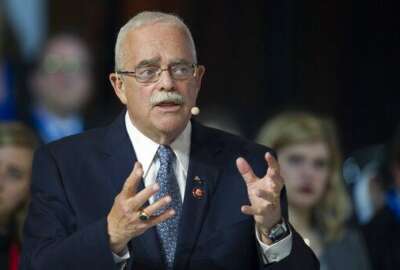

A draft manager’s amendment obtained by Federal News Network shows the Senate Homeland Security and Governmental Affairs Committee also includes $650 million for...
The Senate may be finally getting on the IT modernization funding bandwagon.
After almost of two decades of Senate appropriators blockading almost every attempt to add substantial money to governmentwide funds — first the E-Government and now the Technology Modernization Fund — there is hope in the American Rescue Plan.
A draft manager’s amendment obtained by Federal News Network shows the Senate Homeland Security and Governmental Affairs Committee put $1 billion into the TMF.
This comes after Senate lawmakers signaled they would not support the $9 billion request from the Biden administration.
The manager’s amendment, which is expected to be introduced during the debate over the American Rescue Plan later this week, would resurrect the idea that lawmakers need to help address long-standing federal technical debt. The last time the Office of Management and Budget estimated the depth of the debt was in 2016 when it was $7.5 billion. Five years later, the amount of technical debt likely only has increased as agencies continue to spend 80% of their IT budgets on outdated technology.
In January, then President-elect Joe Biden called the need to address federal technology and cybersecurity an urgent national security issue.
Reps. Gerry Connolly (D-Va.), chairman of the Oversight and Reform Subcommittee on Government Operations, Carolyn Maloney (D-N.Y.), chairwoman of the Committee in Oversight and Reform, and four other members pressed House leadership in late January to include the full $9 billion request in the bill.
“The federal government’s consistent failure to prioritize IT modernization and program delivery prevented the public from receiving the federal assistance Congress authorized to help the nation stay afloat during one of the worst global pandemics and economic crises of our lifetime,” the lawmakers wrote. “Without modern and nimble IT systems, the federal government cannot deliver critical payments and services to individuals, families, and businesses who rely on them. We cannot allow a failure to invest in technology prevent us, once again, from effectively implementing.”
But neither the House nor the Senate version included the extra funding for the TMF.
The draft manager’s amendment also includes $650 million for the Cybersecurity and Infrastructure Security Agency in the Homeland Security Department to protect federal networks, specifically after the SolarWinds attack.
Additionally, the draft legislation would give $200 million for the U.S. Digital Service and another $150 million for the Federal Citizen Services Fund run by the General Services Administration. Both of these additions would go for IT modernization projects too.
This isn’t the first time members tried to get Congress to significantly fund the TMF. Democrats to add more money to the TMF in previous pandemic relief bills. In July, Rep. Steny Hoyer (D-Md.) wanted to appropriate $3 billion for TMF as a line item for the IRS. Rep. Gerry Connolly (D-Va.) also tried to increase the TMF by $3 billion in May. These and other attempts never made it past the Senate.
In addition to the TMF and other specific IT modernization increases, the draft bill includes $20 million for the IRS for premium pay for the development of technology; $140 million for the Indian Health Service to expand its telehealth infrastructure and for its electronic health record program; and $25 million for the Agriculture Department to improve the technology that runs the supplemental nutrition assistance program (SNAP), including launching a mobile pilot.
The funding for TMF, CISA, USDS and the FCSF is far from a done deal. There are plenty of members in the Senate who still do not support adding more funding, especially to the TMF, which some view as a “slush fund.”
But the fact HSGAC got the language in the manager’s amendment is one of the most optimistic signs the federal IT community has seen in almost a decade.
Copyright © 2024 Federal News Network. All rights reserved. This website is not intended for users located within the European Economic Area.
Jason Miller is executive editor of Federal News Network and directs news coverage on the people, policy and programs of the federal government.
Follow @jmillerWFED

